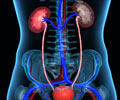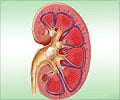
Research has generated conflicting results on the health impacts that may occur when a person experiences variability in levels of hemoglobin (the component of blood that transports oxygen throughout the body) after taking erythropoiesis stimulating agents (ESAs). These drugs are commonly used to treat anemia in patients with kidney disease. Unfortunately, ESAs can increase the risk of vascular complications and possibly death when used to boost kidney disease patients' hemoglobin levels to what is considered normal (> 13 g/dL) in the general population. In addition, kidney disease patients often have significant fluctuations in hemoglobin levels when using ESAs.
To see if variability of hemoglobin levels over time may have a negative effect on a patient's health, Kai-Uwe Eckardt, MD (University of Erlangen-Nuremberg, Germany) and his colleagues examined data from 5037 European hemodialysis patients treated over two years. "We were able to establish that variability in hemoglobin levels experienced by many hemodialysis patients, per se, does not appear to increase the risk of mortality," said Dr. Eckardt. However, the study did find that patients with consistently low levels of hemoglobin (<11 g/dL) had 2.34-times the risk of dying during the study period; those whose hemoglobin levels fluctuated between normal and <11 g/dL had 1.74-times the risk of dying during the study period.
Source-Eurekalert















